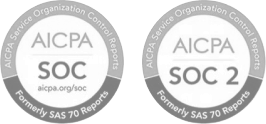Paid Time Off
Article Navigation
Paid Time Off (PTO) is a workplace policy that allows employees to take time away from work while still receiving their regular wages. Unlike traditional time-off structures that separate vacation, sick leave, and personal days, a PTO system typically consolidates all leave types into a single category, offering flexibility and autonomy to employees in managing their time off.
PTO has become a standard offering in many private sector organizations, with varying policies based on employment status, tenure, and company size. The purpose of PTO is to support work-life balance, improve employee satisfaction, reduce burnout, and promote overall productivity. Employees can use PTO for vacations, personal time, medical appointments, or unplanned absences without needing to justify the reason.
Types of PTO Policies
There are several common types of PTO structures implemented by employers:
- Accrued PTO: Employees earn PTO gradually over time, often based on hours worked or months of service. For example, an employee might accrue one day of PTO per month. This method encourages long-term retention and rewards tenure.
- Lump-Sum PTO: Some organizations grant a set number of PTO days at the beginning of the year or employment period. Employees can use the entire balance as needed, offering immediate flexibility but requiring careful management to avoid excessive use early in the cycle.
- Unlimited PTO: Under this model, employees are not assigned a fixed number of days off. Instead, they are trusted to take time off responsibly, as long as their performance and responsibilities remain unaffected. While attractive to candidates, unlimited PTO policies require strong company culture and management trust to be effective.
- Use-It-or-Lose-It PTO: This policy requires employees to use their PTO within a specified period, typically within the calendar year. Unused days are forfeited if not used in time. This model encourages time off but may create a rush toward year-end if not managed well.
- Rollover PTO: Some employers allow unused PTO days to roll over into the next year, often up to a certain limit. This gives employees more control and reduces the pressure to use leave within a specific timeframe.
PTO Policy Components
A well-defined PTO policy includes specific details such as:
- Accrual Rates: How and when PTO is earned (monthly, bi-weekly, etc.)
- Eligibility: Which employees qualify (full-time vs. part-time, probation periods, etc.)
- Approval Process: Guidelines for requesting and scheduling time off
- Payout Terms: Whether unused PTO is paid out at termination or carries forward
- Restrictions: Blackout periods, limits on consecutive days, or minimum notice requirements
Clear communication of PTO policies helps avoid confusion and supports consistent, fair application across the organization.
PTO and Legal Considerations
In the United States, there is no federal requirement for private employers to provide PTO, including vacation or sick days. However, many states and cities have enacted laws that regulate certain aspects of PTO, particularly regarding sick leave or paid family leave. Employers must ensure compliance with local labor laws, especially where mandates exist for accrual, usage, and carryover.
In most jurisdictions, earned PTO is considered a form of earned wage. As a result, companies may be legally obligated to pay out unused PTO upon employee termination, depending on state laws and company policy.
PTO in the Context of Workplace Culture
Offering competitive PTO benefits can significantly influence recruitment and retention. Employees increasingly value flexible, generous PTO policies as part of overall compensation. In high-performance or remote work environments, PTO is a critical tool for preventing overwork and supporting mental health.
However, organizations must ensure that employees feel empowered to actually use their PTO. In workplaces where there is implicit pressure not to take time off, even unlimited PTO can go unused. Managers should lead by example and encourage time off to promote a healthy balance.
Managing PTO Effectively
Employers often use HR software to track PTO balances, automate accrual calculations, and streamline the request and approval process. Transparent tracking systems benefit both employers and employees by minimizing disputes and ensuring compliance with policy.
Employees are encouraged to plan PTO strategically, aligning it with work demands and team coverage to minimize disruption. Proper PTO planning contributes to uninterrupted operations while honoring employee well-being.
Conclusion
Paid Time Off (PTO) is a flexible and essential component of modern employee benefits. Whether structured as accrued, lump-sum, or unlimited, a clearly defined and fairly managed PTO policy can boost employee morale, attract talent, and contribute to a sustainable, productive work environment. Understanding the details of your PTO policy is key to making the most of this valuable benefit.































 Back
Back